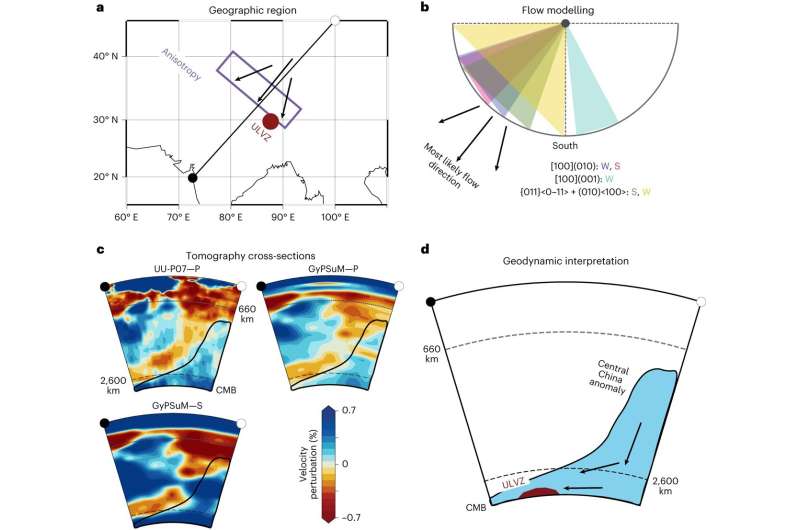This article has been reviewed according to Science X's editorial process and policies. Editors have highlighted the following attributes while ensuring the content's credibility:
fact-checked
peer-reviewed publication
trusted source
proofread
Researchers discover ultra-low velocity zone beneath the Himalayas

Yale researchers are delving deep beneath the Himalayas to investigate dynamic geological processes near the boundary of Earth's core and mantle.
For a new study published in the journal Nature Geoscience, graduate student Jonathan Wolf and seismologist Maureen Long used seismic waves to study the structure just above the boundary between Earth's rocky mantle and metallic core, 1,800 miles beneath Earth's surface.
The researchers discovered a structure known as an ultra-low velocity zone (ULVZ)—a type of formation whose origin, composition, and role in mantle dynamics are poorly understood by scientists.
"Understanding patterns and drivers of mantle dynamics is ultimately important because the whole Earth system is connected," Wolf said. "Processes in the deep mantle also, directly or indirectly, influence what is happening to tectonic plates on top of the mantle and how current surface features have evolved."
The researchers found that the ULVZ beneath the Himalayas may have been formed by subducted material that had sunk from the surface down to the core-mantle boundary.
"A big outstanding puzzle has been whether ULVZs are stationary features or whether they interact with the convective, flowing mantle, so our study speaks to that," said Long, who is the Bruce D. Alexander '65 Professor in Yale's Faculty of Arts and Sciences (FAS) and chair of the Department of Earth and Planetary Sciences. "We also provide direct evidence for subducted slabs playing a role in driving flow at the base of the mantle."
Daniel Frost of the University of South Carolina was a co-author of the new study.
More information: Jonathan Wolf et al, Ultralow velocity zone and deep mantle flow beneath the Himalayas linked to subducted slab, Nature Geoscience (2024). DOI: 10.1038/s41561-024-01386-5
Journal information: Nature Geoscience
Provided by Yale University





















